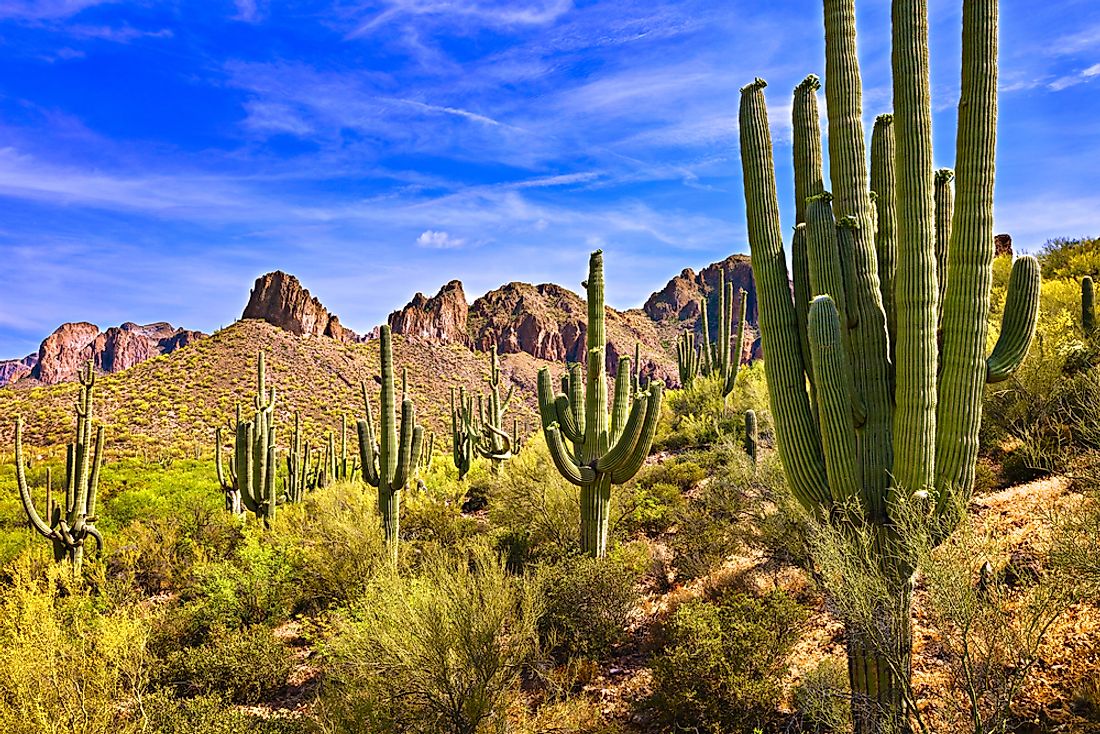Saguaro Cactus - Unique Fauna of North America

The Saguaro cactus is a large species of cactus that dominantly grows in the Arizona state of the US. It is also common in Whipple Mountain areas of California. Any form of harming and destruction to the Saguaro cactus is prohibited in Arizona. The Saguaro National Park was established to help protect the Saguaro cactus.
Growth
Saguaros propagate from their seeds. There are no chances of the plant growing from its cuttings. Saguaros cactus have a long lifespan. They may live up to around 150 years or even more. The first arm grows when they are between 75 to 100 years. However, some of the saguaro cacti never grow any arms. They remain as one straight stem, and are referred to as spear. The growth rate of Saguaros cactus depends on the amount of precipitation. Saguaros cactus in wetter areas tends to grow faster than those in dry areas.
Features
The main stem of the plant usually grows up to over 12 meters in height. On average, the plants usually have a width of 3 meters. The tallest saguaro grew up to around 28 meters. The stem and the arms of the plants are usually evergreen. The stems have spines that measure two meters in height on average.
The spines are known to have a rapid growth rate of about a millimeter per day. Spines stop growing at the end of each season. The older spines are located at the base of the plant whereas the new spines are located at the upper parts of the plants.
The Saguaro flowers in the months of April and June. The white flowers open after dusk and close in mid-afternoon. They nectar production process continues after sunrise. The self-incompatible flowers of Saguaro require cross-pollination. For full pollination to take place, a large number of pollen grains is required. The main agents of the cross-pollination include honeybees, bats, white-winged doves, Gila woodpecker, and gilded flicker.
After pollination of the flowers, the saguaro fruits, which usually have over 1000 seeds, develop. The edible red ruby fruits ripen in the month of June. The fruits are usually between 6 to 9 centimeters.
Survival Tactics
The cactus absorb large amounts of rainwater. The rainwater is then stored for use during the dry season. To increase their reproduction ability, the saguaro cacti develop branches which are referred to as arms. Arms increase reproduction ability because the more the spikes, the more the flowers which eventually lead to more fruits and seeds.
Significance of Saguaro Cactus
A number of birds and other small animals use the saguaro cactus as their habitats. Birds such as the purple martins, house finches, Gila woodpeckers, and gilded flickers peck holes on the stems of the saguaro cactus which they use as their nests. The Gila woodpeckers makes new nests on the cactus each season, rather than reusing the old ones. Other animals such as the wrens and elf owls inherit their old nests. The spikes of the saguaro are sometimes used as sewing needles. There are also groups of people such as the Seri people who also use parts of the plants as food. The Native Americans have been known to utilize the stem of the plants for construction.











